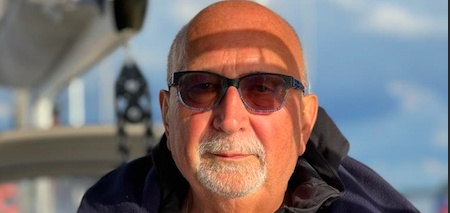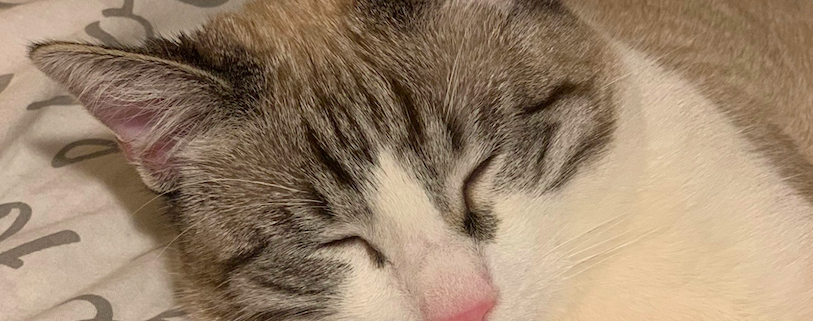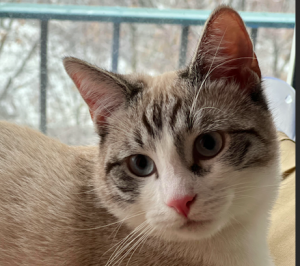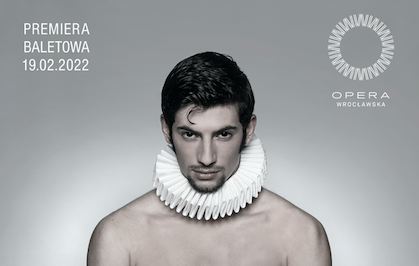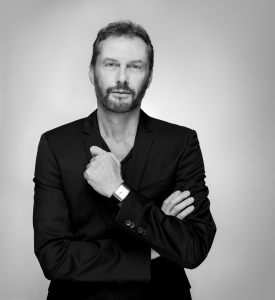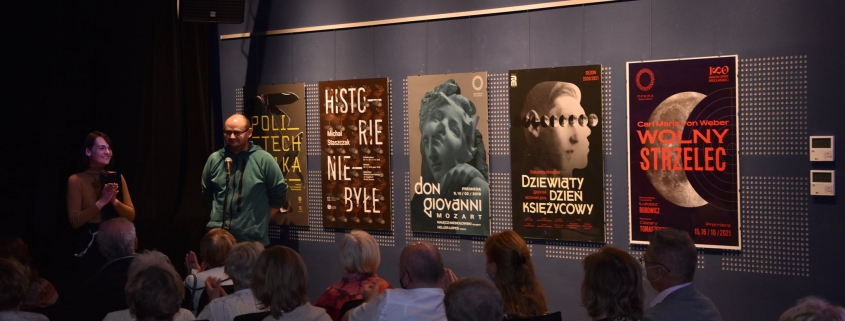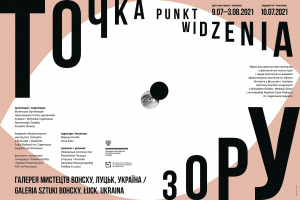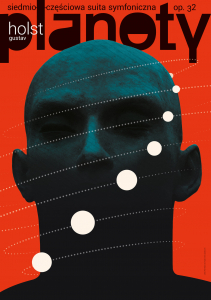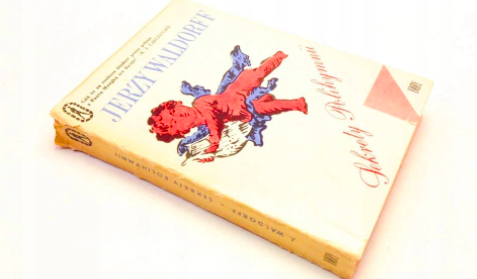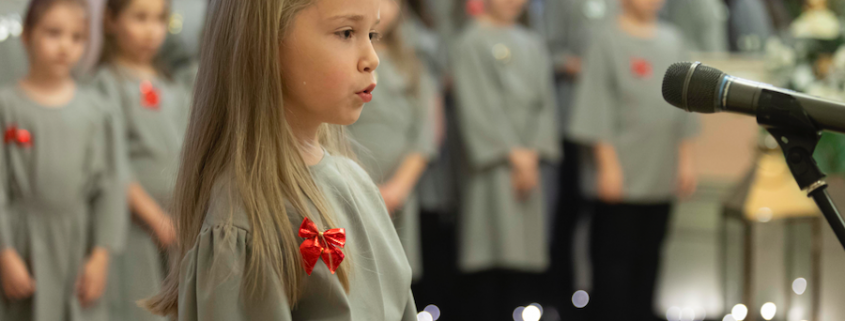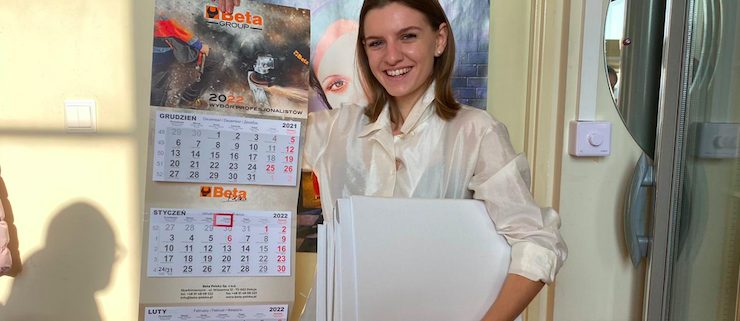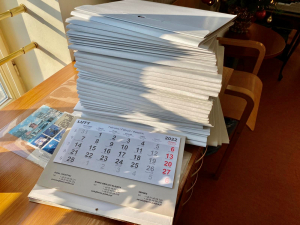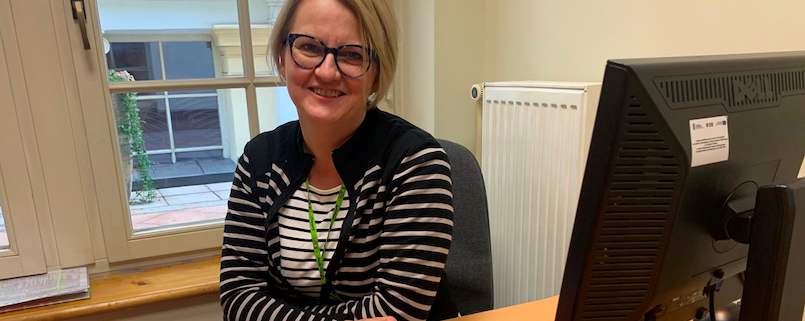Wrocławską kulturę zna od podszewki – współorganizował pierwsze edycje Jazzu nad Odrą, Przeglądu Piosenki Aktorskiej i Festiwalu Teatru Otwartego przy legendarnym Teatrze Kalambur. Był menadżerem wrocławskiego zespołu Crash, ale pracował również z Budką Suflera, Mannam i Obywatelem G.C. Republiki Związku Radzieckiego mogły na żywo posłuchać zespołu Modern Talking dzięki organizowanej przez niego trasie koncertowej. Poznajcie Macieja Partykę!
Pan Maciej dołączył do nas w połowie stycznia – jest głównym specjalistą ds. produkcji spektakli. Swoje doświadczenie z lokalnych, ogólnopolskich i światowych scen od teraz będzie wykorzystywać do realizacji naszego repertuaru.
Jako menadżer kultury i producent miał do czynienia z artystami największego formatu, tworzył też jedno z najważniejszych miejsc na kulturalnej mapie Wrocławia – nieistniejący już jazzowy Klub Rura przy Łaziennej 4. Na swoim koncie ma również organizację Festiwali w Opolu i w Sopocie. Lata pracy z artystami z Polski i zagranicy pozwoliły mu nie tylko nabrać ogromnego doświadczenia w produkcji widowiskowych wydarzeń, były również okazją do kolekcjonowania wyjątkowych historii i anegdot.
Jego agencja koncertowa, założona w czasach PRL docierała m.in. na radziecki rynek muzyczny. Pan Maciej przedstawił tam zespół Modern Talking. Dieter Bohlen i Thomas Anders nie grali już razem i ich rasy koncertowe odbywały się osobno. Celem było odwiedzenie i przejechanie wszystkich republik Związku Radzieckiego… i został on osiągnięty! Podróżowali autokarem, z własną kuchnią i techniką. Wokalista Thomas Anders zabierał w te podróże swoją żonę Norę, która była wegetarianką – przygotowanie dla niej odpowiedniego menu w tamtych czasach było niemałym wyzwaniem:
,,Nora nie jadła mięsa, więc nasz kucharz – Heniu – podawał jej boeuf stroganow bez boefu. Głównie serwował jej ryż, jajko i liść sałaty”
Trasa Modern Talking dotarła aż za koło podbiegunowe, byli również w Kazachstanie, Uzbekistanie, Tadżykistanie, jednak największe emocje wzbudziła podróż przez Armenię i Azerbejdżan, które były wówczas w stanie wojny o Górski Karabach.
,,Jechaliśmy z Thomasem Andersem do Erewania. Nie latały samoloty, trzeba było jechać autobusem. Gruziński kierowca wybrał trasę na skróty przez Górski Karabach, a trwał tam zaostrzony konflikt wojenny! Musieliśmy prosić o wsparcie tamtejsze władze i kiedy wjechaliśmy do Azerbejdżanu żołnierze zapewnili nam eskortę. Przed nami jechał czołg, a za nami ciężarówka z 15 żołnierzami. Całe towarzystwo w autobusie legło na podłogę w strachu przez ostrzałem!”
Pan Maciej – już w pacyfistycznych warunkach – asystował też trasie Deep Purple, Black Sabbath, a jeżeli pamiętacie koncert Boney M. w 1990 roku – to również jego robota! Sprowadził ten uwielbiany przez publiczność zespół z okazji nowego rozdziału w historii Polski. Organizował też koncert Steviego Wondera na Stadionie 10-lecia. Tak wielkie wydarzenie i przyjazd gwiazdy takiego formatu były bardzo wymagające pod względem logistycznym:
,,Scenę przywiozło 30 ciężarówek z Węgier, budowaliśmy ją ponad tydzień przy pomocy dźwigu. Stadion był wielkim obiektem, więc pokonywanie na nim ogromnych odległości pieszo było wyzwaniem. Do tego, żeby wejść na stadion niewidomy piosenkarz musiałby przejść 150-metrowy tunel. Dowiedziałem się, że Steviemu bardzo podoba się jazda melexem i marzy żeby go poprowadzić. Udało się. Stevie na koncert dojechał sam – trzymałem tylko rękę na kierownicy i dyskretnie asekurowałem. Radził sobie świetnie!”
Pan Maciej przez lata współpracował również z Wojciechem Mannem i Krzysztofem Materną, organizował z nimi w Polsce pokazy iluzjonisty Davida Copperfielda. Współtworzyli również festiwal Solidarity of Arts w Gdańsku – wielkie wydarzenie jazzowe, które gościło m.in. Esperanzę Spalding, Herbiego Hancocka czy Bobbiego McFerrina.
Ma kota Czesława, jeździ na nartach, lubi żeglarstwo i długie spacery 😊
Let’s meet: Maciej Partyka, head performance production specialist
He knows Wrocław culture from the inside out – he co-organized the first editions of Jazz on the Odra, Review of Actor Songs and the Open Theatre Festival at the legendary Kalambur Theatre. He was the manager of Crash, a Wrocław band, but he also worked with Budka Suflera, Mannam and Citizen G.C. The countries of the Soviet Union could listen to the band Modern Talking live thanks to the concert tour he organised. Get to know Maciej Partyka!
Mr Partyka joined us in mid-January and is the head production specialist for the performances. From now on he will use his experience from local, national and world stages to realise our repertoire.
As a manager of culture and producer he had to deal with the greatest artists, he also created one of the most important places on the cultural map of Wroclaw – the no longer existing jazz club Rura at 4 Lazienna Street. He has also organized festivals in Opole and Sopot. Years of working with artists from Poland and abroad have allowed him not only to gain vast experience in producing spectacular events, but also to collect unique stories and anecdotes.
His concert agency, set up in communist times, reached out to the Soviet music market, among others. Mr Partyka introduced the band Modern Talking there. Dieter Bohlen and Thomas Anders no longer played together and their concert races took place separately. The goal was to visit and travel through all the republics of the Soviet Union… and it was achieved! They travelled by coach, with their own kitchen and technology. Singer Thomas Anders took his wife Nora, who was a vegetarian, with him on these tours – it was quite a challenge to prepare a proper menu for her in those days:
“Nora did not eat meat, so our cook – Heniu – served her boeuf stroganow without boef. He mainly served her rice, an egg and a leaf of lettuce”.
Modern Talking’s tour reached as far as the Arctic Circle, they were also in Kazakhstan, Uzbekistan, Tajikistan, but the most exciting was the journey through Armenia and Azerbaijan, which at the time were at war over Nagorno-Karabakh.
“We went with Thomas Anders to Yerevan. There were no planes, we had to take a bus. The Georgian driver took a short cut through Nagorno-Karabakh, where there was an intense war! We had to ask for support from the authorities there and when we entered Azerbaijan, the soldiers gave us an escort. There was a tank in front of us and a truck with 15 soldiers behind us. All the company on the bus lay on the floor in fear of being shot at!”
Mr. Partyka – already in pacifist conditions – also assisted the tour of Deep Purple, Black Sabbath, and if you remember the concert of Boney M. in 1990 – that was his job too! He brought this band, adored by the public, to celebrate a new chapter in the history of Poland. He also organised Stevie Wonder’s concert at the 10th-Anniversary Stadium. Such a big event and the arrival of a star of such stature were very demanding logistically:
“The stage was brought in by 30 trucks from Hungary, and we spent over a week building it with a crane. The stadium was a huge facility, so it was a challenge to cover the huge distances on foot. To enter the stadium a blind singer would have to walk through a 150-metre tunnel. I found out that Stevie really enjoyed riding the melex and dreamed of driving it. It worked. Stevie drove himself to the concert – I just kept my hand on the wheel and discreetly assisted. He did great!”
Mr. Partyka also cooperated for years with Wojciech Mann and Krzysztof Materna, and organised with them shows of the illusionist David Copperfield in Poland. They also co-created the Solidarity of Arts festival in Gdańsk – a great jazz event, which hosted Esperanza Spalding, Herbie Hancock or Bobbie McFerrin, among others.
He has a cat Czesław, goes skiing, enjoys sailing and long walks 😊.

